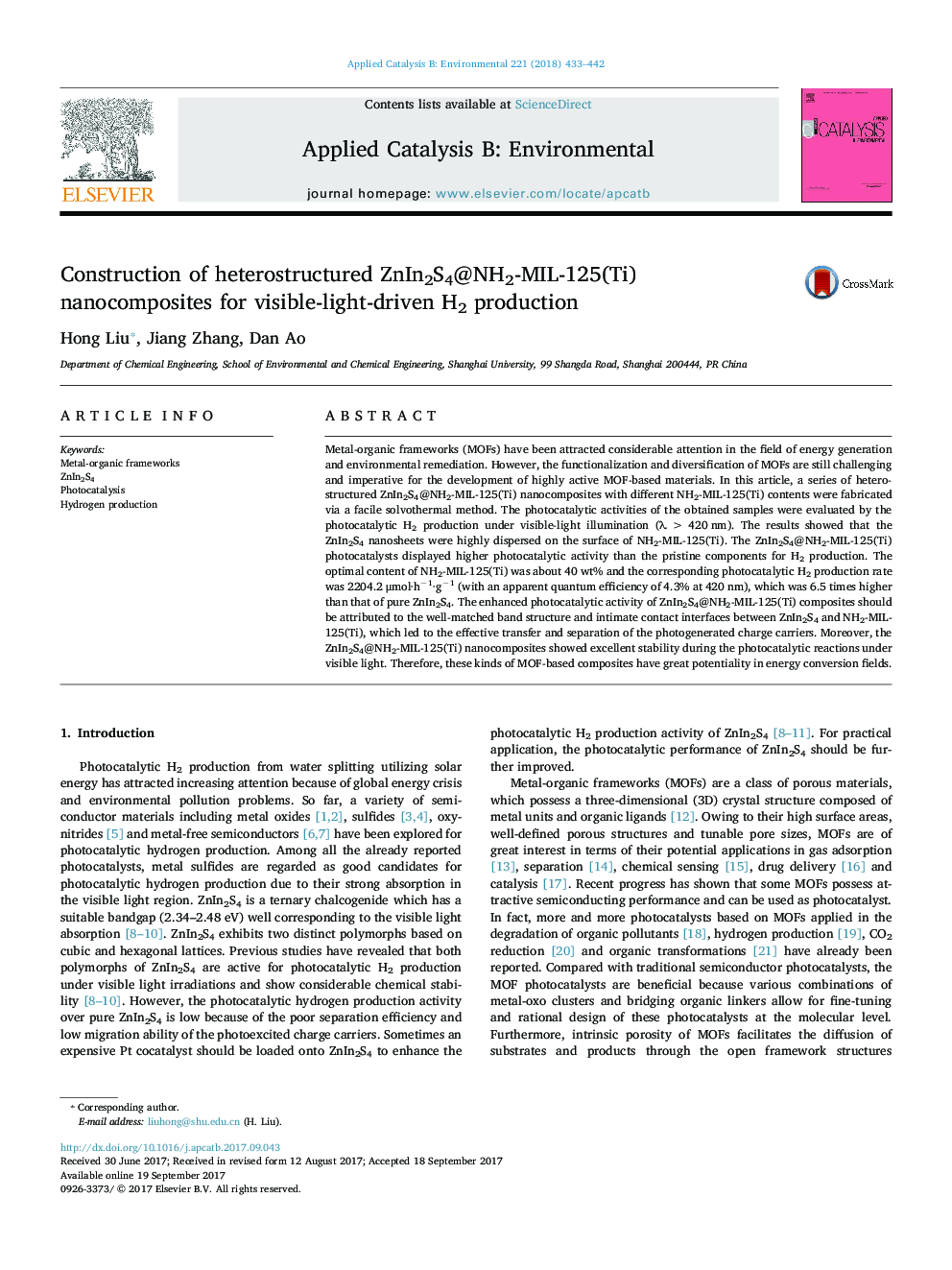| کد مقاله | کد نشریه | سال انتشار | مقاله انگلیسی | نسخه تمام متن |
|---|---|---|---|---|
| 6453471 | 1418799 | 2018 | 10 صفحه PDF | دانلود رایگان |

- ZnIn2S4@NH2-MIL-125(Ti) nanocomposites were synthesized by a solvothermal method.
- The obtained composites exhibited excellent photocatalytic activity and stability.
- A H2 production rate of 2204.2 μmol hâ1gâ1 was obtained over the optimal catalyst.
- An efficient charge separation and transfer was observed in the composites.
Metal-organic frameworks (MOFs) have been attracted considerable attention in the field of energy generation and environmental remediation. However, the functionalization and diversification of MOFs are still challenging and imperative for the development of highly active MOF-based materials. In this article, a series of heterostructured ZnIn2S4@NH2-MIL-125(Ti) nanocomposites with different NH2-MIL-125(Ti) contents were fabricated via a facile solvothermal method. The photocatalytic activities of the obtained samples were evaluated by the photocatalytic H2 production under visible-light illumination (λ > 420 nm). The results showed that the ZnIn2S4 nanosheets were highly dispersed on the surface of NH2-MIL-125(Ti). The ZnIn2S4@NH2-MIL-125(Ti) photocatalysts displayed higher photocatalytic activity than the pristine components for H2 production. The optimal content of NH2-MIL-125(Ti) was about 40 wt% and the corresponding photocatalytic H2 production rate was 2204.2 μmol·hâ1·gâ1 (with an apparent quantum efficiency of 4.3% at 420 nm), which was 6.5 times higher than that of pure ZnIn2S4. The enhanced photocatalytic activity of ZnIn2S4@NH2-MIL-125(Ti) composites should be attributed to the well-matched band structure and intimate contact interfaces between ZnIn2S4 and NH2-MIL-125(Ti), which led to the effective transfer and separation of the photogenerated charge carriers. Moreover, the ZnIn2S4@NH2-MIL-125(Ti) nanocomposites showed excellent stability during the photocatalytic reactions under visible light. Therefore, these kinds of MOF-based composites have great potentiality in energy conversion fields.
153
Journal: Applied Catalysis B: Environmental - Volume 221, February 2018, Pages 433-442